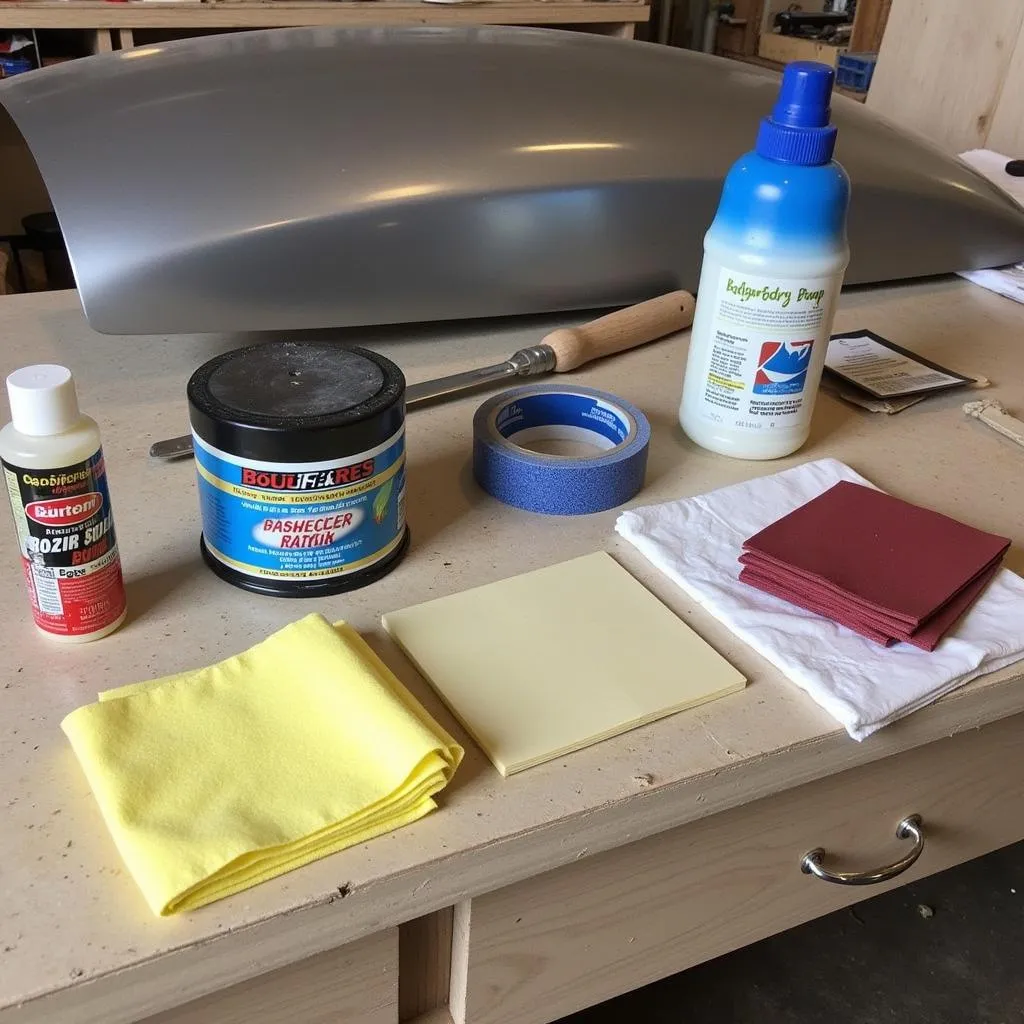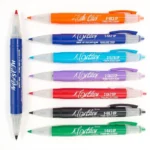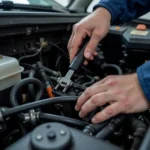Having minor scratches or chips on your metallic car paint can be an eyesore. Thankfully, you don’t always need a professional to restore your car’s shine. This comprehensive guide will walk you through the steps on how to repair metallic car paint, empowering you to tackle those imperfections and bring back that showroom gleam.
Assessing the Damage: Knowing Your Enemy
Before diving into the repair process, it’s crucial to assess the extent of the damage to your car’s paint.
- Minor Scratches and Swirl Marks: These are superficial scratches that haven’t penetrated the base coat.
- Chips and Deep Scratches: These go beyond the clear coat and might even expose the bare metal underneath, increasing the risk of rust.
Gathering Your Arsenal: Tools and Materials
Having the right tools and materials is key to achieving a professional-looking finish. Here’s what you’ll need:
- Cleaning Supplies: Car wash soap, microfiber wash mitt, microfiber towels, rubbing alcohol (70% isopropyl alcohol).
- Sanding Supplies: Sandpaper (2000-grit, 3000-grit), sanding block, masking tape.
- Paint Supplies: Automotive primer (if necessary), touch-up paint (matching your car’s color code), clear coat.
- Finishing Touches: Polishing compound, rubbing compound, car wax, microfiber cloths.
Prepping the Battlefield: Cleaning and Sanding
- Thorough Cleaning: Start by washing the affected area and its surroundings with car wash soap and water. Rinse thoroughly and dry completely with a microfiber towel.
- Targeted Cleaning: Use rubbing alcohol to remove any remaining wax or grease from the damaged area.
- Sanding (If Necessary): For deep scratches or chips, lightly sand the area with 2000-grit sandpaper. Use a sanding block for even pressure and a back-and-forth motion in the direction of the scratch.
Repairing Minor Scratches: A Delicate Touch
- Polish Application: Apply a small amount of polishing compound to a clean microfiber cloth.
- Gentle Buffing: Rub the compound onto the scratch using circular motions. Apply light to moderate pressure.
- Clean Finish: Wipe away any residue with a clean microfiber cloth. Repeat if necessary.
scratch pen for cars paint repair can be an easy solution for minor scratches, offering a convenient and often effective way to mask those superficial blemishes.
Tackling Deep Scratches and Chips: A Step-by-Step Approach
- Priming (If Needed): If bare metal is exposed, apply a thin coat of automotive primer to the affected area. Let it dry completely.
- Touch-Up Paint Application: Using a fine-tipped brush or the applicator provided with the touch-up paint, carefully apply thin coats of paint to the chipped or scratched area. Allow each coat to dry completely before applying the next.
- Sanding for a Seamless Finish (If Necessary): Once the touch-up paint has dried for at least 24 hours, lightly sand the area with 2000-grit sandpaper, blending the edges with the surrounding paint.
- Clear Coat Application: Apply 2-3 thin coats of clear coat over the repaired area, extending slightly beyond the edges to ensure proper blending. Let each coat dry completely before applying the next.
- Final Sanding and Polishing: After the clear coat has cured for at least 48 hours, wet sand the area with 3000-grit sandpaper to level the surface. Follow up with polishing compound and then rubbing compound for a smooth, glossy finish.
small car paint repair cost can vary depending on the severity of the damage and the repair method chosen. However, understanding the factors that influence these costs can help you make informed decisions.
Protecting Your Handiwork: Waxing
Once you’re satisfied with the repair, protect your hard work by applying a high-quality car wax to the entire area. This will help seal and protect the paint, enhancing its shine.
Seeking Professional Help: When to Call in the Experts
While DIY repairs can be effective for minor paint imperfections, some situations might require the expertise of a professional car body shop paint repair. Consider seeking professional help if:
- The damage is extensive and covers a large area.
- The metal is severely dented or warped.
- You’re uncomfortable with the repair process or unsure about achieving satisfactory results.
If you’re in the Orland Park area, Orland Park car paint repair shops offer specialized services and can provide professional assistance.
Conclusion: Restoring Your Car’s Luster
Repairing metallic car paint can seem daunting, but by following these steps and using the right techniques, you can restore your car’s finish and maintain its value. Remember, patience and attention to detail are key to achieving professional-looking results. However, don’t hesitate to seek professional help if needed – it’s better to be safe than sorry when it comes to your car’s appearance.



